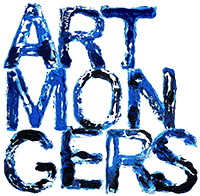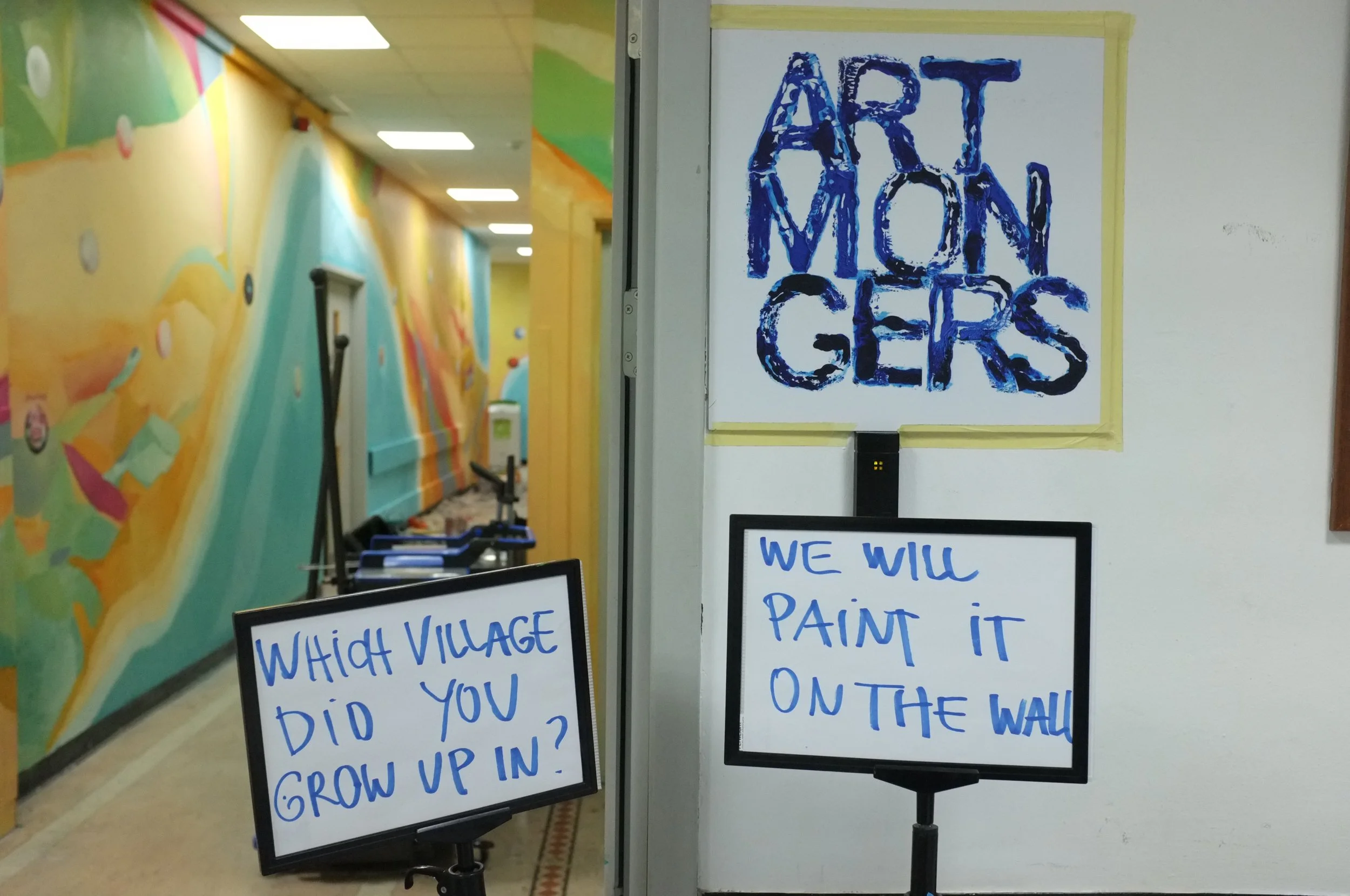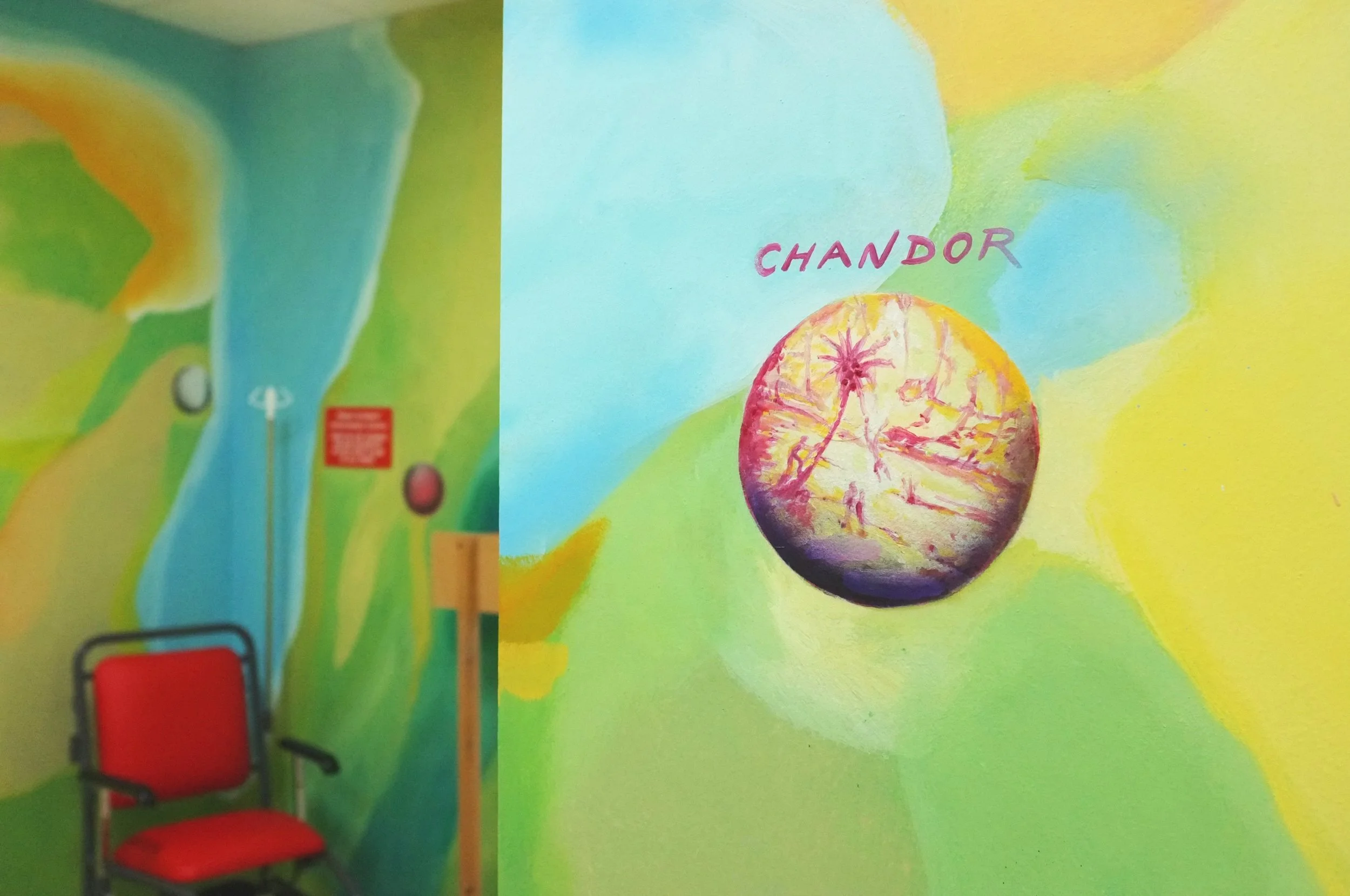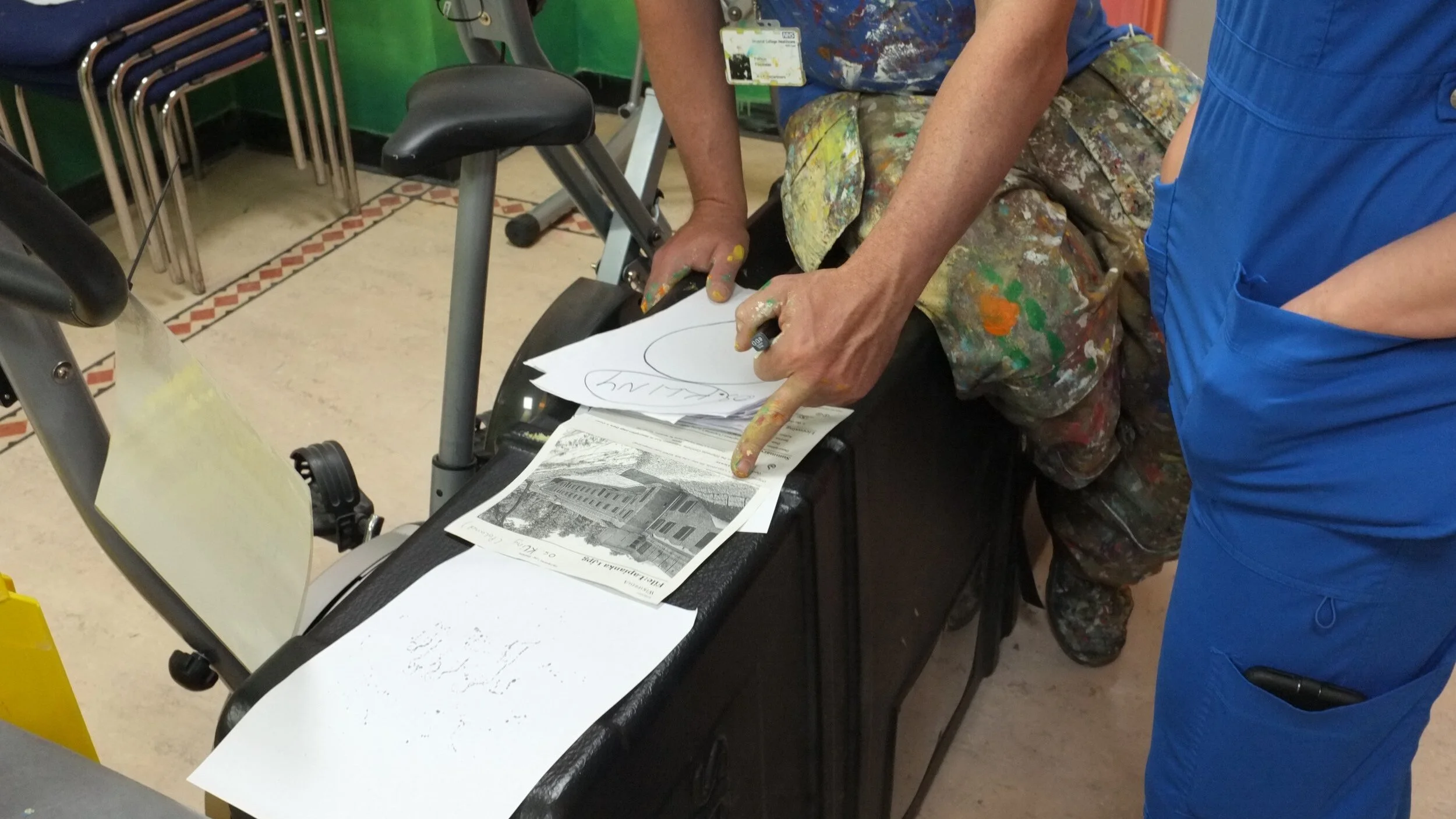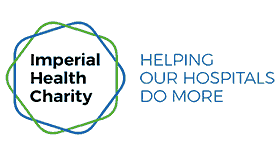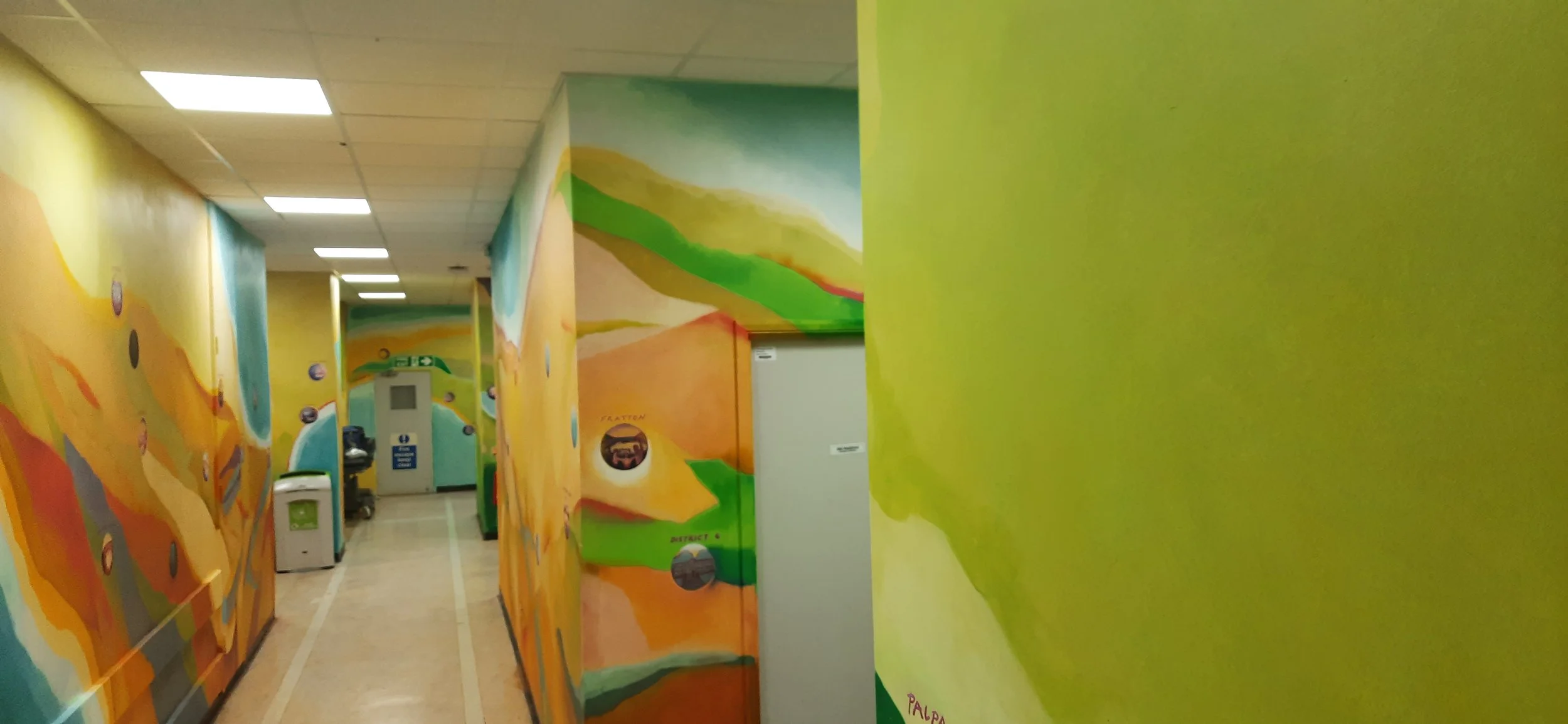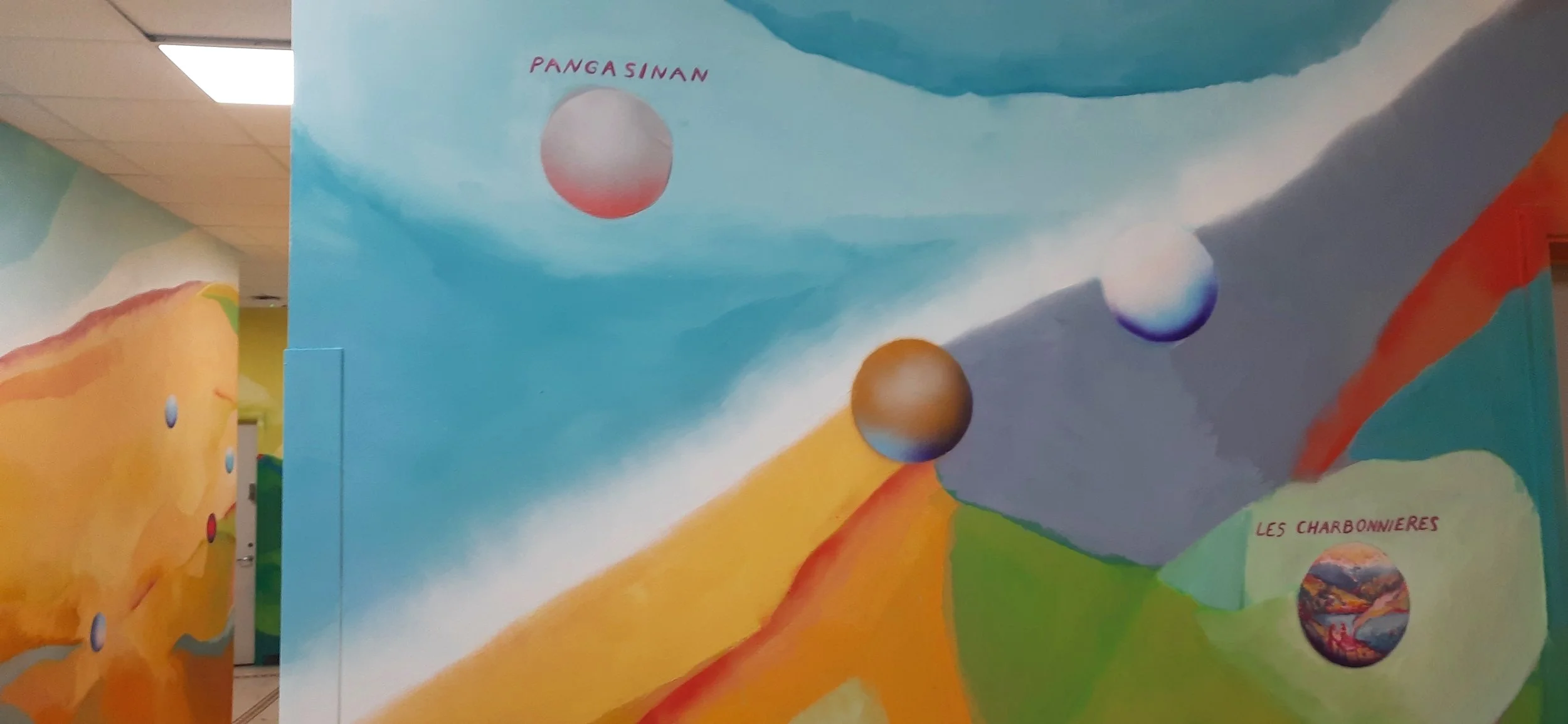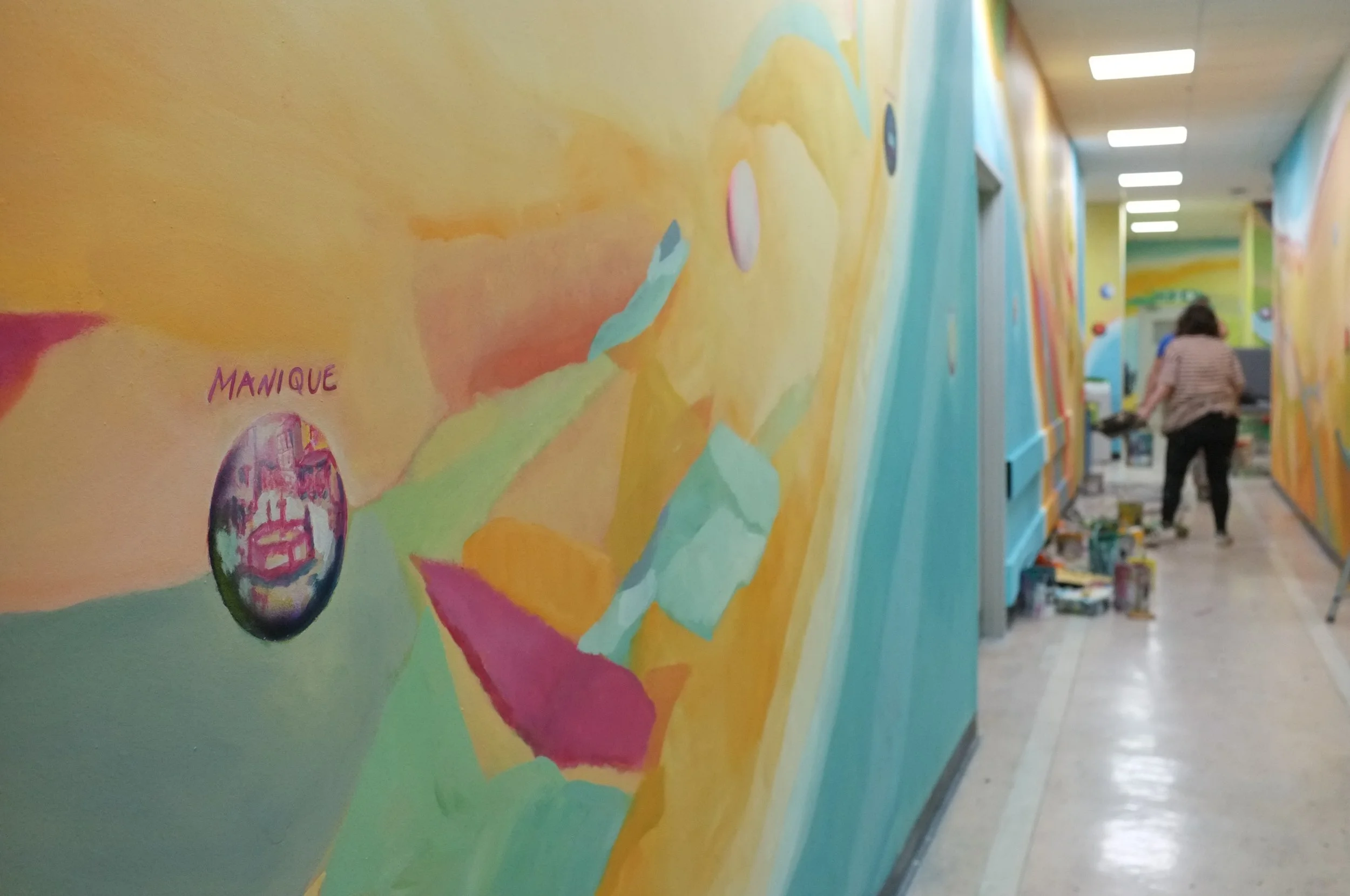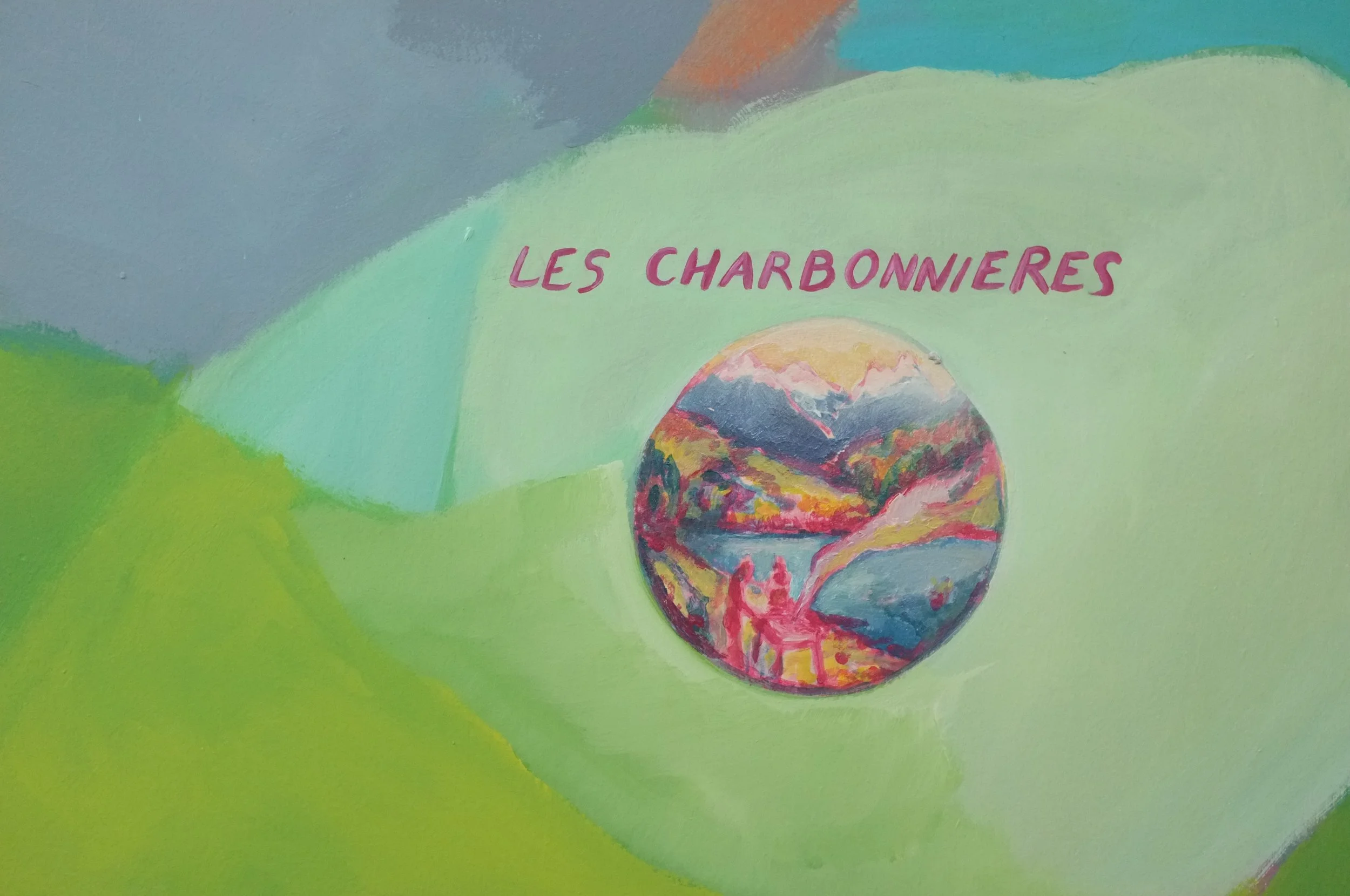World Map of NHS Staff Childhood Memories
We were approached by Doctor Anu Mitra to paint a mural that would brighten up this A&E corridor, as a small gesture of gratitude for the incredible work hospital staff had done during the pandemic.
We were asked to engage as many workers as possible in the process and to collaborate with them to make something they would have real ownership over.
Rather than going in with a clear plan, we got to know staff while we painted the white base coat. We discussed different ideas with passing workers and found a well of creativity. The theme of diversity came up again and again, with several staff members pointing out how incredible it is that people from all over the world work in the NHS. This was a great starting point, but art is also about finding an original angle.
Finally, it came to us. What if instead of just talking about where staff come from, we explore their journey to becoming a healthcare worker in this London Hospital?
During our childhood, countries and capital cities don’t really mean anything to us. We see the world in terms of the neighbourhoods, villages and streets that form the centre of our emotional geography. When you think about it, ideas of nationality arrive much later.
We set out to ask as many staff as possible about where they grew up. Which village, hamlet or neighbourhood did they grow up in and to choose a precious memory from that time.
Before this project, these unique stories about the diverse experiences of childhood weren’t part of the work place landscape. They are invisible, everyone too focused on their work to give them a second thought.
Our mission was to transform a functional space for routine walks into a wander down memory lane. By doing this, we hoped to get staff interested in their colleagues’ backstories and memories.
This World Map of Childhood Memories used the familiar colour-coding of an Atlas, but adapts the topography to the often hard shapes of the corridor. Effervescent floating bubbles represent the individual memories. The bubbles look as if they are floating through space, constantly shifting and jostling for space. Emblazoned above them are the names of the villages where each of these moment occurred. To find the right images, we worked closely with workers to turn their memories into a single moment, frozen in time.
Reflecting on the project, Patricio Forrester said, ¨One important element of this project is that it’s been an equaliser. Cleaners, domestic staff, nurses and doctors are all on the same footing. They're all addressed as humans.”
Funded by
